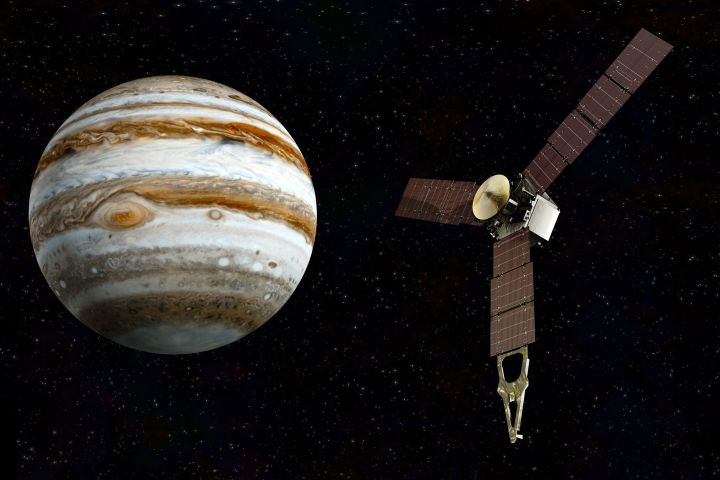
A few days before the spacecraft fires its main engines into Jupiter’s orbit, a short documentary, Destination: Jupiter, will shed light on the science and technology behind NASA’s ambitious mission. The documentary will be available to stream on CuriosityStream for users and those who sign up for a free 30-day trial.
“The mission has the potential to illuminate some of the biggest mysteries about Jupiter and the formation of our solar system,” CuriosityStream’s executive producer, Noah Morowitz, who helped lead the Destination: Jupiter project told Digital Trends.
Among these mysteries, Morowitz listed the planet’s treacherous storms and unseen core, which some experts think may contain a metallic ocean. Solving these puzzles will help us understand the gas giant, but will also help us understand home. “If we discover that Jupiter is relatively wet, that would indicate that the Earth’s oceans formed at the dawn of the solar system,” Morowitz noted. “But if Jupiter turns up dry, the origins of our oceans — from where life sprung — remains a riddle.”
Juno has already smashed records on its route to Jupiter. In October, 2013, as the spacecraft was slingshot around Earth, it accelerated to almost 25 miles per second, making it the fastest man-made object ever created.
And Juno has a couple more records ahead of it. For one, the 20 million RAD (radiation units) it will endure over the course of the mission will be unparalleled. Jupiter’s immense radiation required NASA engineers to build a 400-pound titanium skull to protect the spacecraft’s wiring. And when NASA attempts to fly just 2,900 miles above Jupiter’s clouds, Juno will break the previous record by 18,000 miles.
Interest in space is booming. As the so-called “New Space Race” heats up, Morowitz said space remains the most popular topic for his website’s viewers. “Every discovery in space is a piece of the puzzle that, fitted together, paints a picture of the universe,” he said. “Space exploration is a twofer: it reveals life … and the farthest reaches of the cosmos.”
Editors' Recommendations
- How to watch space shuttle Endeavour’s ‘final mission’ tonight
- How to watch NASA’s all-private crew launch to the ISS on Sunday
- How to watch JUICE mission launch to Jupiter’s icy moons
- NASA’s Juno spacecraft shares first image from Jupiter moon flyby
- How to watch SpaceX’s Cargo Dragon depart ISS on Friday


